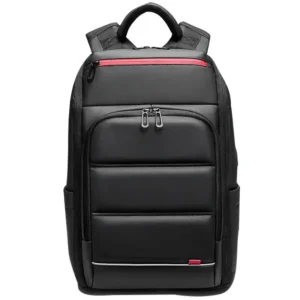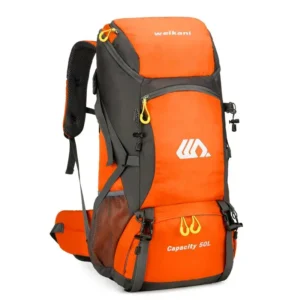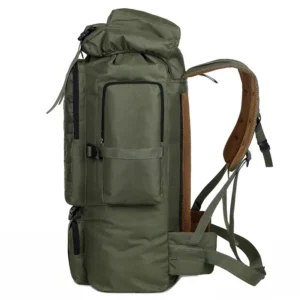Can You Put North Face Backpacks in the Washing Machine? A Comprehensive Guide
Understanding the Materials of North Face Backpacks
North Face backpacks are renowned for their durability, style, and functionality. However, understanding the type of materials used is crucial before deciding whether to put them in a washing machine. Typically, these backpacks are made from a blend of synthetic fabrics designed to withstand harsh weather conditions and rough usage. Materials like nylon and polyester are common due to their water-resistant properties and strength. Additionally, many North Face backpacks feature special coatings that enhance their water-repellent capabilities and overall durability. Washing such backpacks without due consideration could compromise the integrity of these materials, leading to reduced water resistance or even damaged fabrics.

What Happens When You Machine Wash Your Backpack?
Detergents and hot water can be quite abrasive on the special coatings that North Face backpacks often have. They can strip away these protective layers, making the backpack more susceptible to wear and tear. Moreover, agitation during a wash cycle can also lead to snags or tears in the fabric. The machine's spinning motion might tangle straps, affecting their functionality or comfort. Additionally, zippers and buckles could be damaged, reducing the efficacy and aesthetics of the backpack. As such, even though washing machine use seems convenient, the risks often outweigh the benefits, unless the backpack's care instructions specifically allow it.
-
$45.90 Select options This product has multiple variants. The options may be chosen on the product page
Spot Cleaning vs. Machine Washing: A Comparison
Spot cleaning is often the preferred method for maintaining North Face backpacks. This method targets only the soiled areas, significantly reducing the amount of wear on the materials and preserving their water resistance and strength. In contrast, machine washing immerses the entire backpack in water and subjects it to detergent and mechanical action, potentially compromising its structure. Spot cleaning also allows for focused attention on stubborn stains, often with milder cleaning agents, reducing the risk of damage. Comparing both methods, spot cleaning proves gentler and more aligned with manufacturer recommendations, especially when the goal is to maintain the backpack's longevity and performance.

The Advantages of Hand Washing
Hand washing offers a middle ground, ensuring thorough cleaning while preserving the integrity of your North Face backpack. This method involves using mild soap and lukewarm water to carefully clean the backpack's surface and interior without soaking. Hand washing allows you to take control of the pressure applied, avoiding unnecessary stress on fabric seams and ensuring no soap residue is left behind, which could otherwise degrade the fabric or coatings over time. Additionally, it helps maintain the vibrant colors and functional aspects of the backpack, including the durability of zippers and straps. Hand washing extends the life of your backpack, optimizing it for continuous rugged use.
-
$29.90 Select options This product has multiple variants. The options may be chosen on the product page
-
$45.90 Select options This product has multiple variants. The options may be chosen on the product page
-
$49.90 Select options This product has multiple variants. The options may be chosen on the product page
Common Mistakes to Avoid When Cleaning Backpacks
One critical mistake often made is using harsh chemicals or bleach during cleaning, which can severely damage fibers and remove protective coatings. Ignoring manufacturer's care labels is another common error that could lead to irreversible damage. Additionally, many people underestimate the importance of air-drying; throwing a backpack into a dryer can shrink or deform its shape and loosen stitches. Overloading a washing machine with several items, including the backpack itself, is also harmful as it prevents effective cleaning and exposes the backpack to undue friction and entanglement. Avoiding these missteps is crucial to preserving the longevity and appearance of your backpack.
-
$79.90 Select options This product has multiple variants. The options may be chosen on the product page
-
$29.90 Select options This product has multiple variants. The options may be chosen on the product page
Preparing Your Backpack for Cleaning
Before starting the cleaning process, it's imperative to empty your backpack completely and unfasten all zips and buckles to expose all areas. This not only ensures a thorough clean but also prevents dirt imbedded in seams or pockets. Inspect the backpack for specific areas needing more attention, like sweat stains or soil marks and treat them with a gentle stain remover. Given the numerous organizational compartments in North Face backpacks, ensuring these are accessible aids in removing hidden debris and improves cleaning efficiency. The outcome is a pristine backpack, devoid of unpleasant odors or hidden dirt, thus ready for use in any adventure.
Drying Your Backpack After Cleaning: Best Practices
Once cleaned, allow the backpack to air dry naturally. Hang it upside down if possible, to allow water to drain completely from all compartments and avoid moisture retention, which can lead to mildew or odors. If you're in a hurry, using a fan can expedite the drying process without the risks associated with machine drying. Avoid direct sunlight as it can fade colors and weaken fabrics. Proper drying ensures your backpack is not only clean but retains its functional and aesthetic qualities over prolonged use. This careful attention to drying also prevents accidental warping or damage that could arise from improper handling post-cleaning.

Make Informed Choices for Backpack Care
In conclusion, while the convenience of using a washing machine is tempting, hand washing and spot cleaning remain the most effective and safe methods to maintain North Face backpacks. Understanding the materials and following recommended care guidelines can greatly extend the life and functionality of your backpack. Simple steps like proper drying techniques and avoiding harsh chemicals play a crucial role in retaining the durable and waterproof qualities that North Face is known for. Ultimately, taking these informed measures ensures that your backpack is always adventure-ready, supporting your outdoor pursuits efficiently.





























